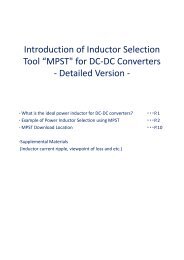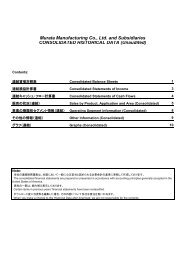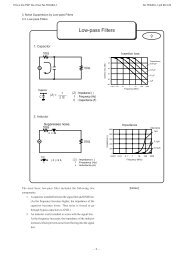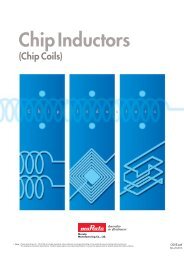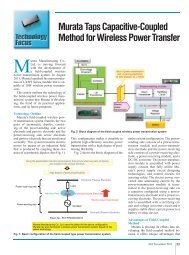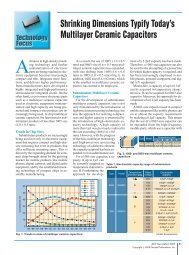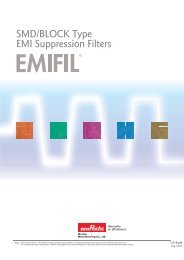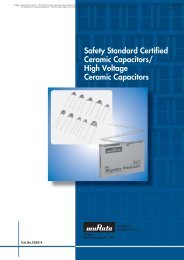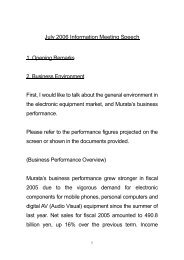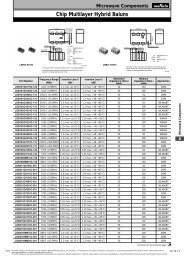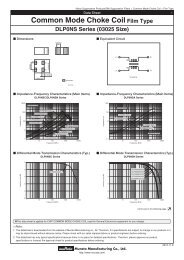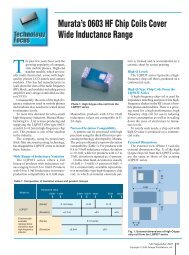Technical guide PDF - Murata
Technical guide PDF - Murata
Technical guide PDF - Murata
Create successful ePaper yourself
Turn your PDF publications into a flip-book with our unique Google optimized e-Paper software.
If you would like to provide the information requested for the conditionsbelow, <strong>Murata</strong> can make more detailed proposals based oncustomer-specific applications.Discharge condition of capacitorDischarge ConditionEDLC voltage1. Max charge voltageVMaxEarly voltage characteristic2. Allowable Min.voltageVminDischarging timeRequired charge (c)or Energy (J)Energy (J) =Power (W) x Discharging time t(sec)Charge (c) = Current (A) x Discharging time t(sec)ChargeconditionDischargeconditionUsageenvironmentCondition Example PurposeCharge voltage for 2.5V To confirm required number of cells incapacitorseries and consider discharge time.Charge voltage VmaxCharge current 500mA(in case of constantcurrent charge)Charge(C)orEnergy(J)Power × time(W x sec)orCurrent × time(A × sec)Numbers of discharge ona single chargeAccepted lower limit ofvoltage VminMinimum operationtemperatureActual usagetemperatureprofile150mJor300mC1.5W×100msecor3A×100msecNumbers of dischargeon a single charge( 5 times)1.3(V)To confirm required currentRegarding discharge effectiveness, itis necessary to consider max power orcurrent because it is affected by energyloss caused by internal resistanceTo calculate the discharging time.-20℃ At low temperature, dischargeeffectiveness decreases because ofESR increase.Under 40℃(typ)30000hrs70℃(Max)Under 500hrsOthers Loss on the circuit Effectiveness(%)orResistance(Ω)To confirm capacitance decrease andESR increase throughout the product lifeTo Confirm required capacitance。10




